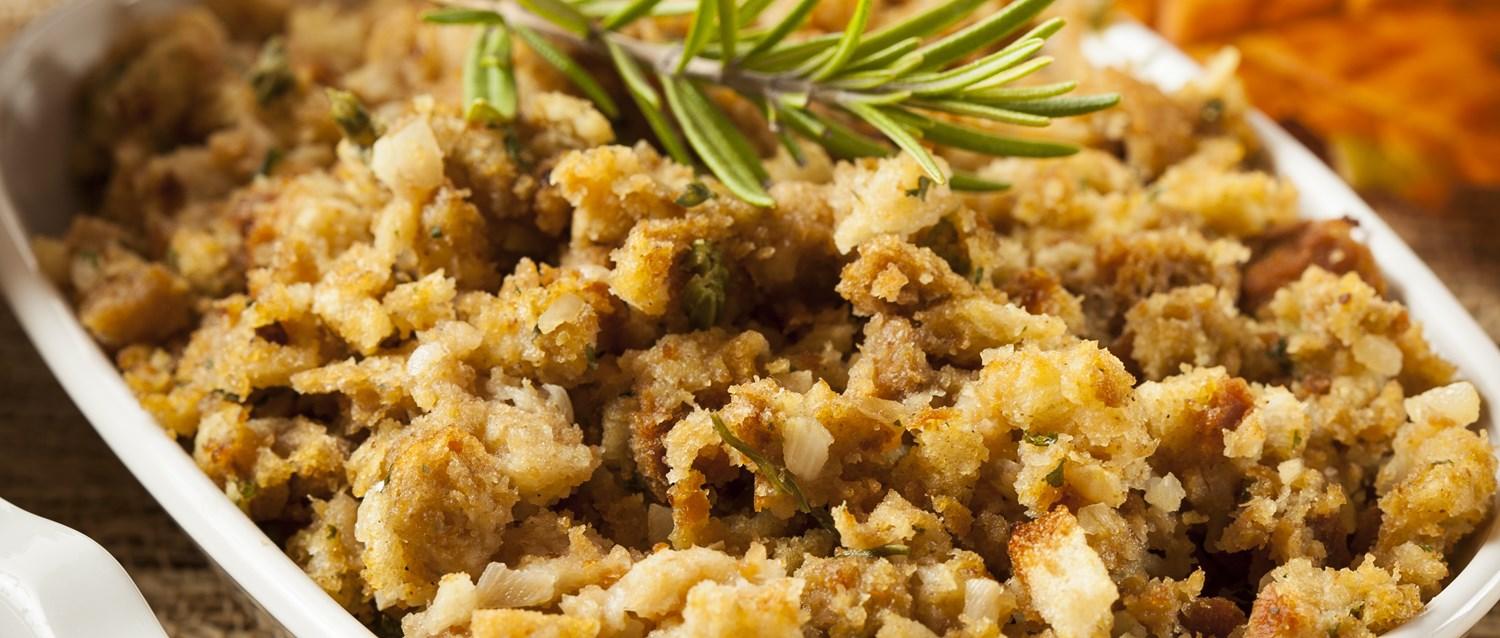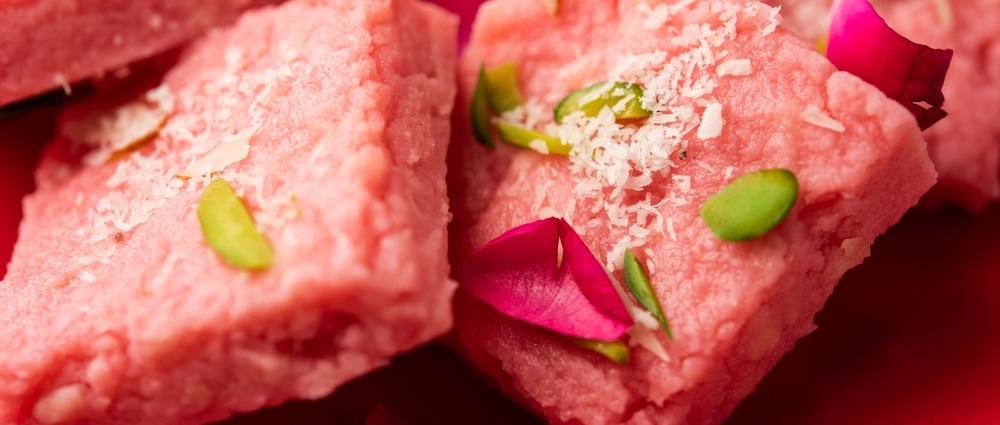
How to make healthy stuffing
Peer reviewed by Dr Sarah Jarvis MBE, FRCGPLast updated by Natalie HealeyLast updated 13 Dec 2017
Meets Patient’s editorial guidelines
- DownloadDownload
- Share
- Language
- Discussion
Stuffing is a popular side dish at the Christmas table, and it can even rival the festive bird in terms of taste and texture for some. But how healthy is stuffing? And how can you make it as nutritious as possible without sacrificing its palatability?
We challenged three professional chefs (Bradley, Reece and Renaldo) from the Good Eating Company to show us the healthy way to do it. We then asked nutritionist Rose Constantine Smith to analyse their efforts.
In this article:
Rose says that although you might see the festive season as an excuse for a meat feast, choosing a vegetarian stuffing will be better for your health. Don't be put off by a bread-based recipe, she advises.
“The vegetarian version of stuffing is generally made predominantly from bread, making it a source of fibre (especially if you use a wholegrain or wholewheat version) and often low in fat. Stuffing becomes less healthy with the introduction of meats such as pork, as that increases the salt and fat content.”
Continue reading below
Bradley's sage and onion light stuffing
Bradley Sinkins is head chef at Engine.
Ingredients
Serves 4
1.5 large onions
1 small handful of fresh sage
2 gluten-free rolls
1 small egg
10g Flora Light spread
1/2 tsp black pepper
1/2 tsp sea salt
Method
Preheat oven to 200°C / Gas 6
Finely chop the onion, put on a microwave-safe plate and cover with clingfilm. Microwave for 6 minutes at 2-minute intervals.
Once soft, use a blender to mix to a paste.
Using the blender, blitz the rolls into breadcrumbs.
Then, in a bowl, mix to combine the onion, sage and seasoning.
Beat one small egg and add to mixture along with the Flora. Stir until it is well-mixed and is a thick paste.
Press into a shallow non-stick dish to around 1 inch thick and put on the top shelf for 20
minutes or until golden.
Reece's fibre-filled walut and cranberry stuffing
Reece Taylor is head chef at Arup.
He says: “I’m using flaxseed instead of white bread as it will add extra fibre and give the dish greater nutritional value.”
Ingredients
Serves 4
60g flaxseed bread (dried and blended coarsely)
160g walnuts (chopped)
80g dried cranberries
1/4 brown onion (diced finely)
1/4 tsp rapeseed oil
100g minced lardons
100g minced pork back fat
200g minced lean pork
1/2 bunch sage (finely chopped)
1/4 bunch flat leaf parsley (finely chopped)
2g cracked black peppercorns
2g salt
Method
Over a medium heat, in a pan heat the rapeseed oil.
Add the onions and cook gently until golden. Leave to one side and once cool, mix with the rest of the ingredients in a large bowl until evenly distributed.
On a clean side prepare a 60cm sheet of food-safe clingfilm. Place the mixture along the shorter edge of the clingfilm leaving an inch gap at the end. Using the inch gap lift the cling film and roll over the mixture keeping it tight and roll to create a sausage shape. secure each end by tieing in a small knot.
Bring a pan of water to a simmer and place the watertight roll of stuffing into the water. Poach in the simmering water for approximately 1 hour. Cool in the fridge.
When ready to eat, preheat the oven to 160°C.
Place a frying pan over a medium-high heat and add a tsp of rapeseed oil. Remove the clingfilm from the stuffing roll, place in the pan and fry turning frequently so that is golden all over.
Place the stuffing roll onto a sheet of foil and wrap. Roast in the oven for 20 minutes.
Continue reading below
Renaldo's quinoa, apricot and hazelnut stuffing
Renaldo Wright is head chef at Henry Wood House.
He says: “I’ve made my stuffing using wholemeal bread instead of white. I am going to be adding quinoa, apricots and hazelnuts which all contain their own health benefits. Apricots are high in vitamin A and a good source of vitamin C and fibre. I have chosen hazelnuts because of their vitamin E which is good for skin, hair and nails. Also quinoa as it's high in protein, fibre, magnesium and riboflavin.”
Ingredients
Serves 16
175g wholemeal bread
1 egg
100g cooked quinoa
40g chopped apricot
40g chopped hazelnuts
20g olive oil
20g parsley
3g sea salt
Method
Preheat the oven to 200°C / 180°C fan
Cook your quinoa in unsalted boiling water until cooked.
Blend your bread and nuts in a mixer separately then roughly chop your apricots and parsley by hand.
Dice your onion and sweat down in a pan until your they turn clear.
In a large bowl add all your ingredients together with your egg and mix by hand until all your ingredients have combined. If your stuffing is a little dry add a small amount of water.
Now place into an oven-proof dish and bake for 12 mins, or until the top is slightly crusty and it is hot through.
The nutritionist’s view
Rose says:
Bradley
“Bradley's stuffing is the lowest in calories and fat, but it is misses an opportunity to add nutritional value with only three nutrients present at a significant amount.”
Reece
“As Reece’s recipe contains three sources of pork, two of which are fatty, although tasty, it is sadly high in fat with 100g containing 33g of fat, 6.7g being saturated. The addition of nuts, flaxseed bread and dried fruits does increase the nutritional value, particularly for Vitamins B1, 3 and 6.”
Renaldo
“Renaldo’s stuffing is 173 kcal more per 100g than Bradley’s and also higher in fat by 7g per 100g, but the majority come from unsaturated sources, olive oil. What's more, it contains 13 nutrients such as folic acid, iron and selenium at a significant value. It is also high in fibre due to the addition of wholemeal bread and quinoa to the recipe.”
The take home message
“If I was to approach this I would look to stick to a vegetarian option as there is a lot of other meats within a Christmas meal, I would reduce the bread content and make up with a vegetable or fruit such as grated apple to increase the fibre content and to count towards your five a day. I would also pack it with flavour by using plenty of herbs such as sage, thyme or rosemary.”
Patient picks for Recipes

Diet and nutrition
7 vibrant autumn recipes - keep it seasonal
From the warm oranges of squash, pumpkins and carrots to the vibrant purples of blueberries and beetroot, autumn fruits and veggies are as rich in colour as they are in flavour. Not only can they brighten darker evenings, they can lighten up your taste buds with a powerful nutritional punch.
by Victoria Raw

Diet and nutrition
Have a healthy Diwali - food swaps and recipes
It's autumn and almost that time of year again for Diwali, a festival filled with celebrations, time with loved ones, and of course lots of indulgent foods and sweet treats. If you have diabetes, poor heart health, or are managing your weight, it can be hard to restrict the delicious Diwali foods you enjoy. With help from two dietitians, we share planning tips, food swaps, and recipes so that you can celebrate a more healthy Diwali - without missing out on your festive favourites.
by Lynn Stephen
Continue reading below
Article history
The information on this page is peer reviewed by qualified clinicians.
13 Dec 2017 | Latest version

Ask, share, connect.
Browse discussions, ask questions, and share experiences across hundreds of health topics.

Feeling unwell?
Assess your symptoms online for free
Sign up to the Patient newsletter
Your weekly dose of clear, trustworthy health advice - written to help you feel informed, confident and in control.
By subscribing you accept our Privacy Policy. You can unsubscribe at any time. We never sell your data.